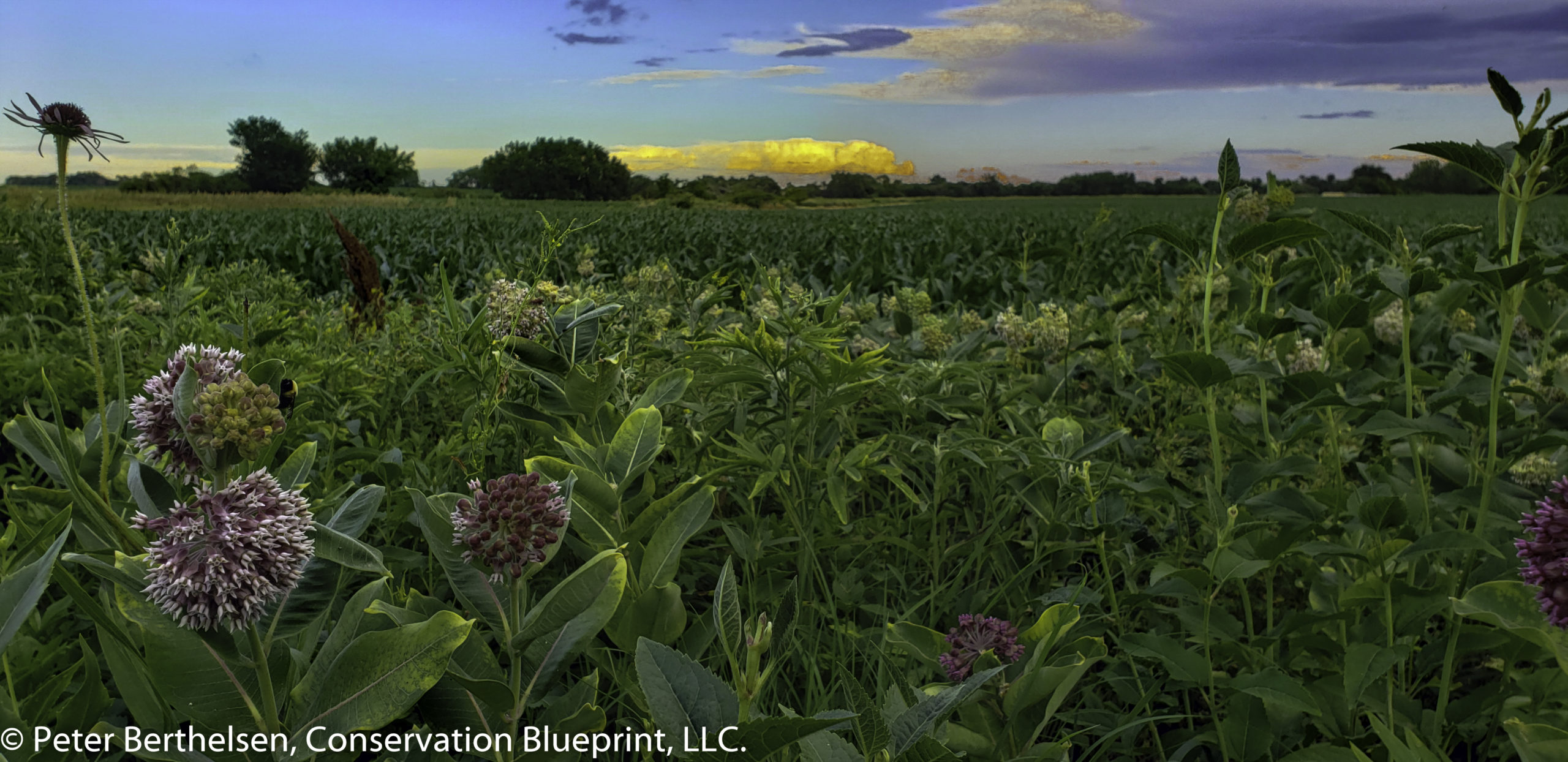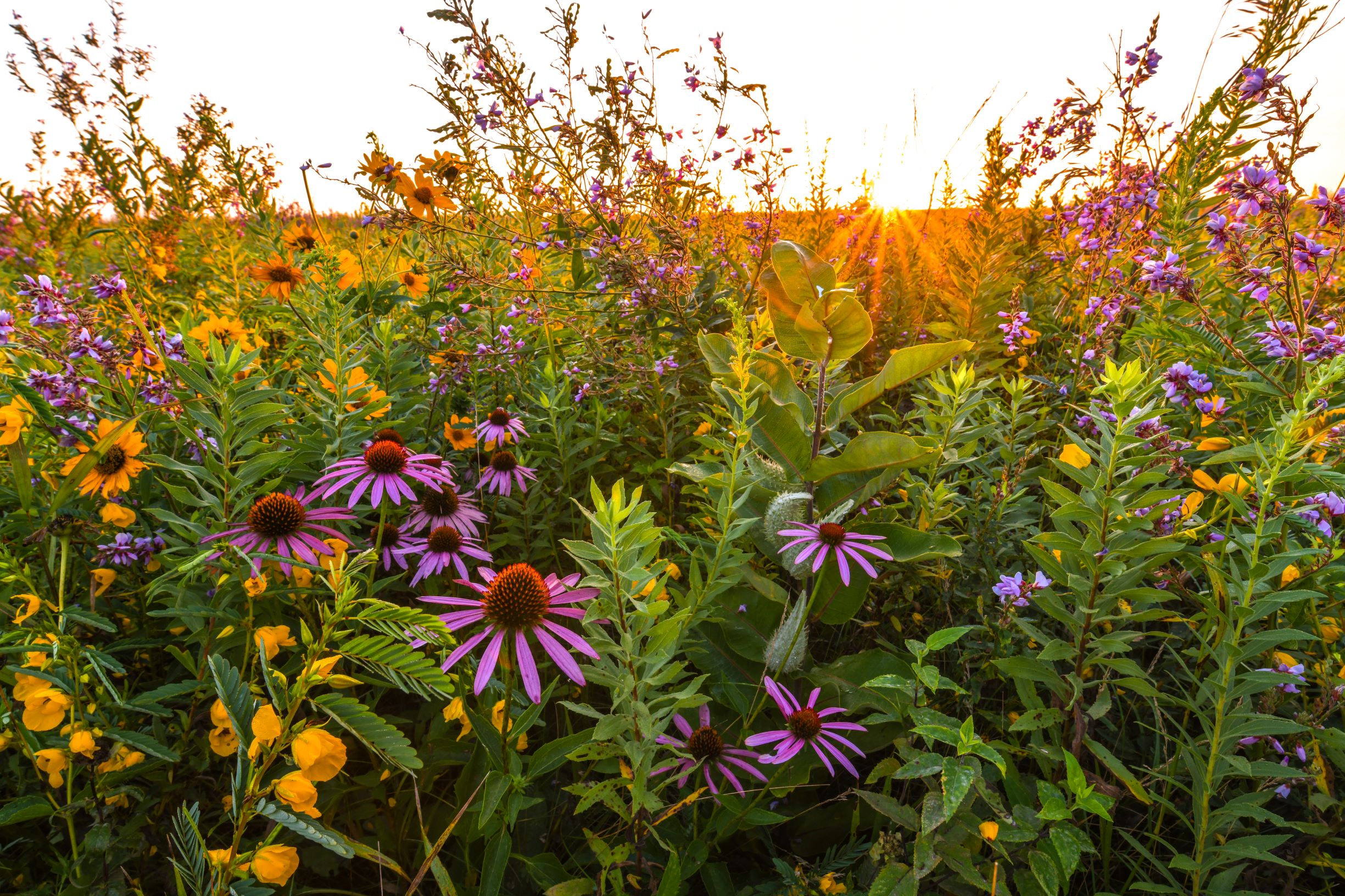
Planting pollinator forage on non-farmed areas enhances the landscape, looks great and can even increase yield. Farmers and landowners have considerable capacity to increase pollinator habitat, not just milkweed for monarchs but other native wildflowers for all pollinators. That is why the Monarch Collaborative encourages farmers to engage in broad conservation practices that protect nectar resources for pollinators, in addition to milkweed for monarchs. Identifying and preserving common native flowering plants is critical to overall pollinator survival.
Many farmers include habitat for pollinators as part of their land conservation ethic. Whether it’s change in agriculture policy and legislation, an understanding that pollinators could improve crop value, or simply a desire to increase land aesthetics, farmers are engaged in preserving and enhancing flowering plants on non-crop land.

Diversity and duration are key to providing annual resources for pollinators. As you increase the number of different flowering species in your seed mixture, the more pollinator species you will benefit. When thinking about your planting, keep in mind that you want to provide forage for pollinators throughout the entire growing season. Early season and late season blooming plants are the most difficult to find. Be sure to include those in your planting to provide early and late season nectar resources to pollinators. The Natural Resources Conservation Service recommends the additional following steps to protect flowering nectar resources:
- Know the habitat on your farm. Look for areas on and around your land that can support native pollinators.
- Protect flowering plants and nest sites. Once you know where pollinators are living and foraging, do what you can to protect these resources from disturbance and pesticides. The Monarch Collaborative has extensive information on how to protect habitat when using herbicides and pesticides.
- Enhance habitat with flowering plants and additional nest sites. Most pollinators prefer to nest in warm, dry places. Nests are created underground, in twigs and debris, and in dead trees or branches.

Want to establish great pollinator habitat? Contact the Bee and Butterfly Habitat Fund which provides free pollinator seed mixtures on projects two acres in size or larger. The Plant Materials Program of the NRCS also has helpful technical resources to assist landowners with selecting plants for wildlife habitat as well as methods for establishing and managing habitat.
The Keystone Monarch Collaborative is an initiative of the Keystone Policy Center. The Collaborative supports productive agriculture and livestock operations in concert with monarch conservation. Because farmers and ranchers are stewards of the land across much of monarch habitat, they are in a unique position to support sustainable monarch populations.
